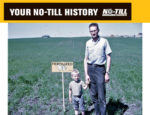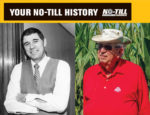Advertise Follow Us
No-Till 101
Memories from Western Canada – The Schmeiser Family Farm
Son of the late Percy Schmeiser – who famously battled Monsanto – recounts no-till’s memories in Saskatchewan.
Read More
North Carolina Shares in No-Till History, Too
Kentucky isn’t the only state to mark a no-till first. North Carolina claims one of its own farmers also put their no-till crop in during 1962.
Read More
Timeline of Herbicide Developments
As weed-control products came of age in the decades after World War II, no-tillage was given a chance to become a viable practice.
Read More
From The Archives: No-Till Gets More Attention Among Soil Conservationists
(August 1982 No-Till Farmer)
Read More
‘Outsiders’ in D.C. Moved No-Till Forward
Two no-tillers — Peter Myers and Bill Richards — brought credibility and trust to Washington, D.C., as they charted a transition for U.S. farmers.
Read More









